松阪はお茶も美味しい。本格的なお茶を楽しめる飯南の「深緑茶房」にて、三重県出身の写真家・浅田政志さんが味わう!
掲載日:2021.12.15
三重県南勢地域で最大の茶産地である松阪市。松阪市の飯南・飯高地域では「松阪茶」として、上質な深蒸し煎茶が生産されています。今回はお茶農家であり、日本茶カフェをともに営まれる「深緑茶房」さんを、写真家・浅田政志さんが訪れ、松阪茶の魅力についてインタビューします。
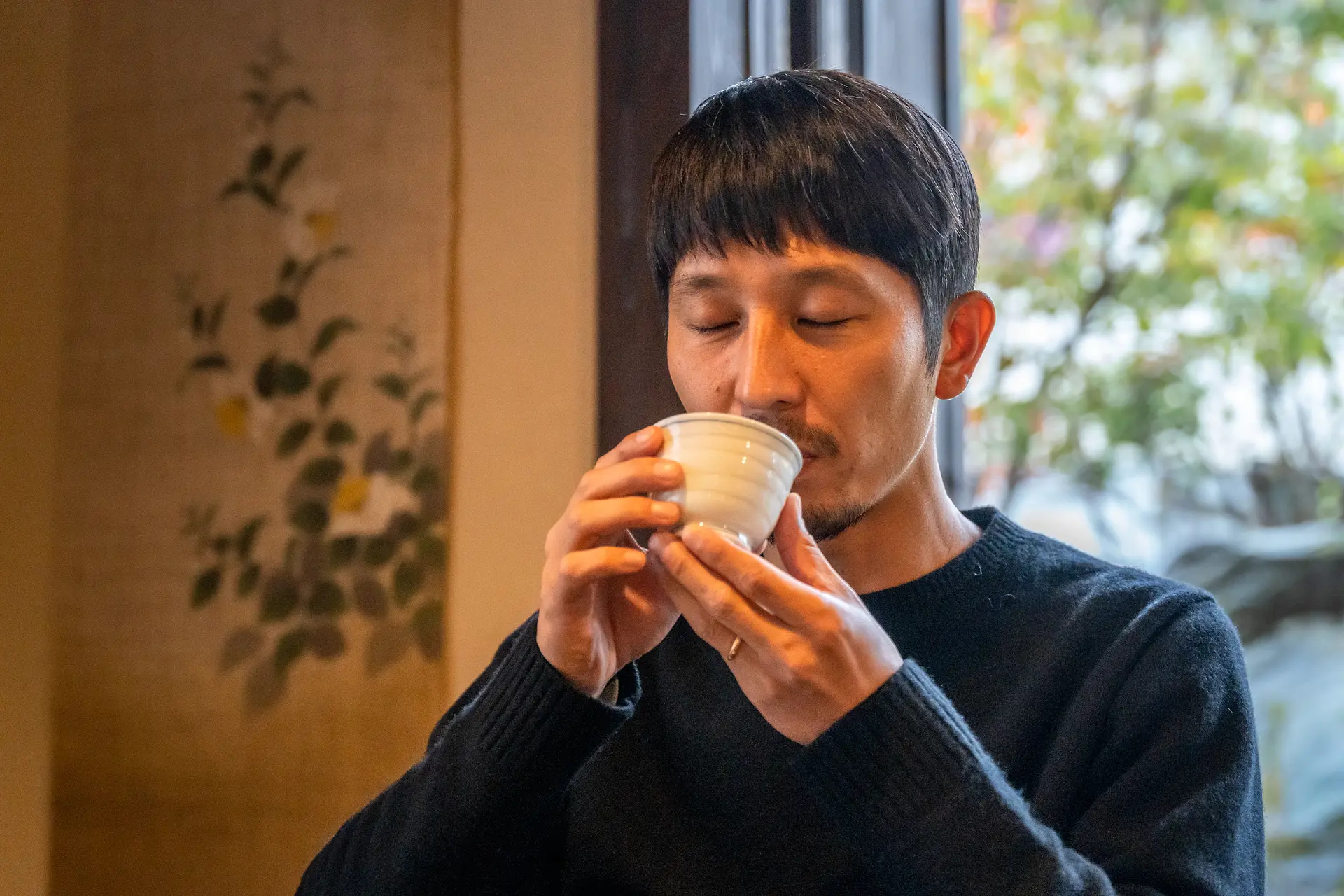
「松阪茶」とは、松阪で生産される深蒸し煎茶の名称(愛称)。三重県全域では「伊勢茶」とも呼ばれているもので、2010年の公募で、松阪といえば"お茶"と連想できるよう「松阪茶」という名称がつけられました。三重県は、お茶の栽培面積・生産量が全国3位のお茶どころであり、松阪市の飯南・飯高地域は三重県南勢地域最大の茶産地となっています。今回は豊かな自然に囲まれる飯南で茶農家・日本茶カフェを営む深緑茶房の3代目・松倉大輔さんに、三重県出身の写真家・浅田政志さんがインタビューします!
記事内には、浅田政志さんが撮影した写真もあります。要CHECK!
映画「浅田家!」の原案者でもある浅田政志さんのプロフィールはこちらから
■目次
1.松阪茶を生産・販売する深緑茶房について
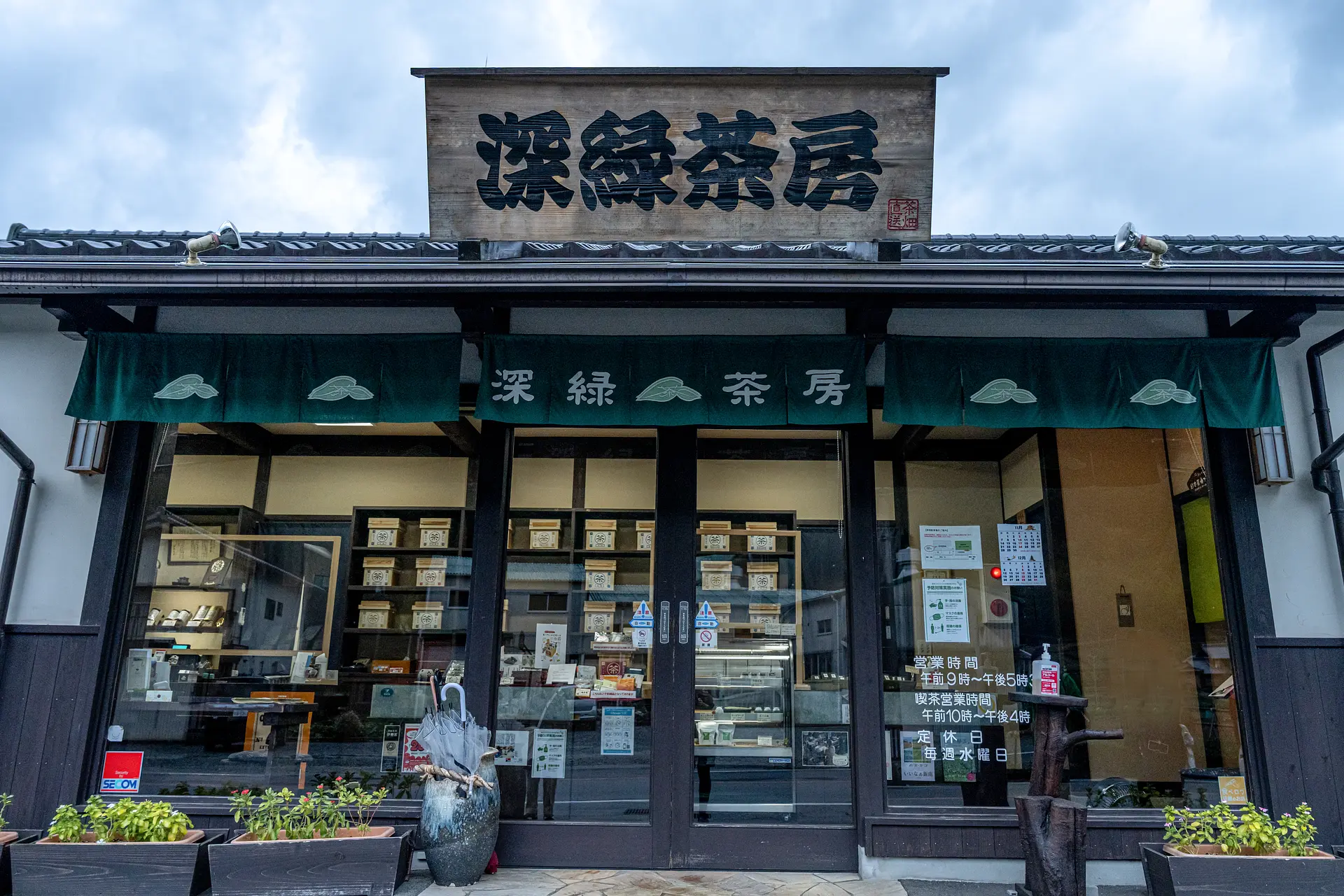
深緑茶房は3つのお茶農家がお茶産業や地域の自然を守ることを目標として設立した農業生産法人。1999年の設立以来、日本の農林水産業の中で最高の栄誉とされる農林水産大臣賞「天皇杯」を受賞、また伊勢志摩サミットにて深緑茶房が生産する「千寿」が呈茶されるなど、素晴らしい功績を残されています。
代表・松倉さん 深緑茶房を設立したきっかけとなったのは、茶価の低迷、お茶需要の減少、地域の茶農家が持つ機械の老朽化が目立つようになったことです。このままだと飯南の茶業自体が衰退していくかもしれないということで、3農家で農業生産法人を設立しました。三重県のお茶の生産量は、全国3位ではありますが、全国1・2位の静岡・鹿児島と比べると、茶畑の面積や生産量は圧倒的に劣ります。そのため「三重県のお茶生産が無くなったとしても、全国の消費量に影響はない」といわれることもありますが、お茶は産地によって味が異なるので、「三重や、松阪のお茶の味が無くなると困る」という方が必ずいると思って生産を続けています。
2.松阪茶の特徴
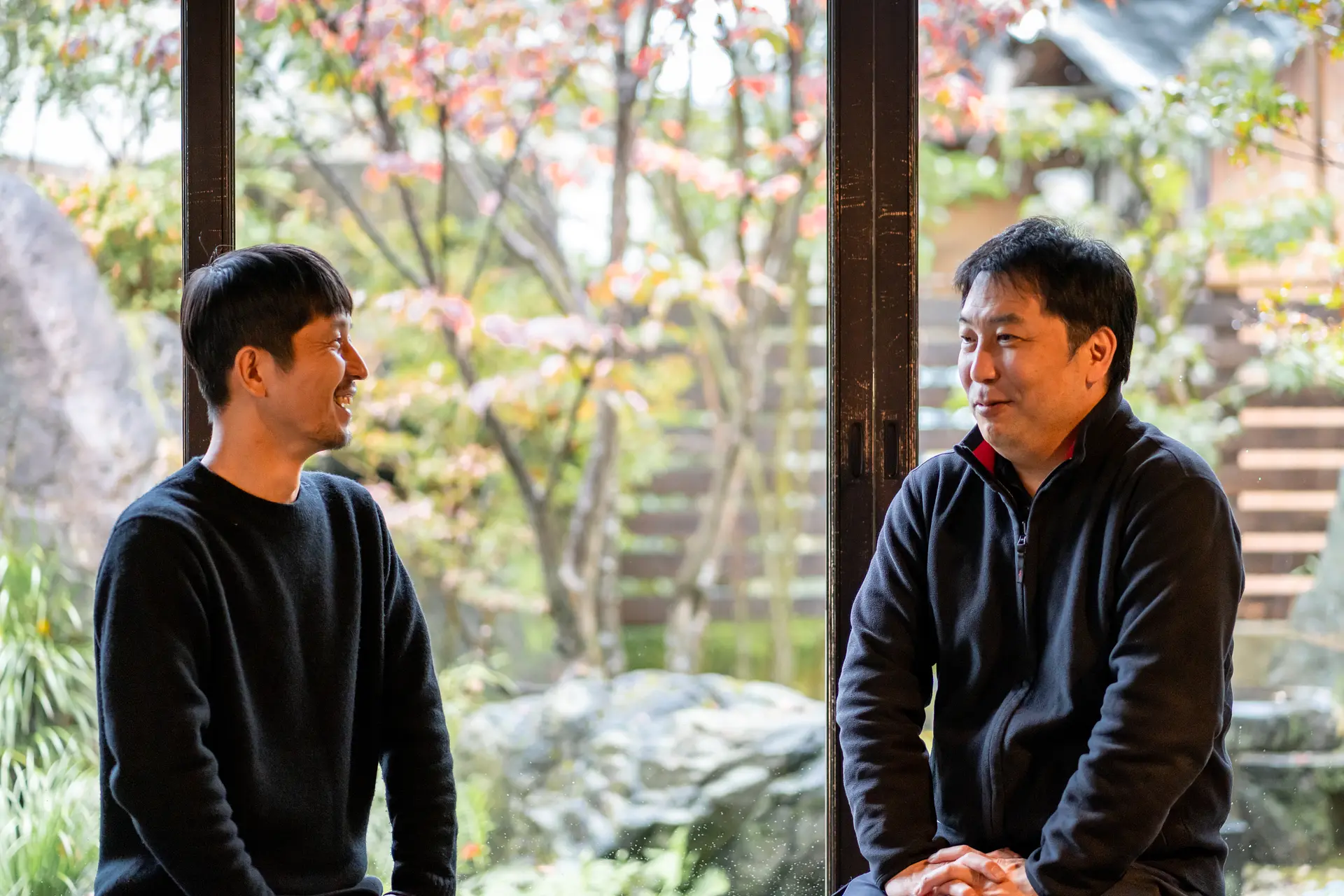
浅田政志さん 松阪の深蒸し煎茶にはどんな特徴がありますか?
代表・松倉さん 松阪市飯南のあたりは山に近いため寒暖差があり、その影響により、お茶の味の深さが増すんです。飲んでみると、パンチの強さを感じるかと。また、茶畑のそばに川が流れていて、朝や夜は茶畑に霧がかかり、これもお茶の味を良くするのに効果的と言われています。
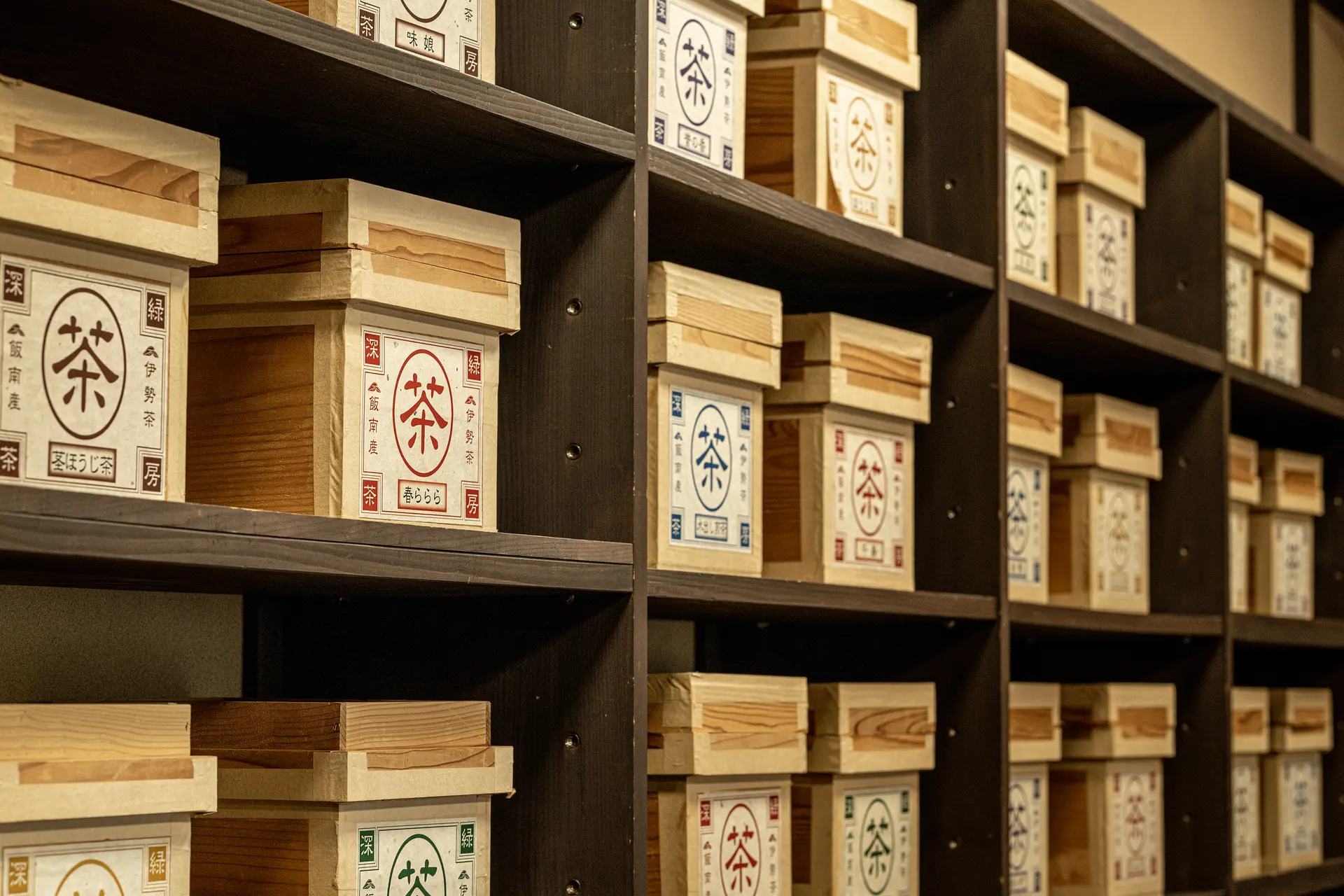
深緑茶房では多数の種類のお茶を販売しており、同じ深蒸し煎茶でも味わいが様々。日本茶カフェで飲めるのは、お茶本来のうまみとコクを味わえる「茶寿」(税込800円)、まったりとした甘みが特徴の「千寿」(税込500円)、爽やかな渋みの後にうま味を感じる「深緑」(税込480円)など。お茶に合わせて手作りの和菓子やパフェ、あんみつなども注文可能。お茶もスイーツも種類豊富で、迷っちゃいますね!
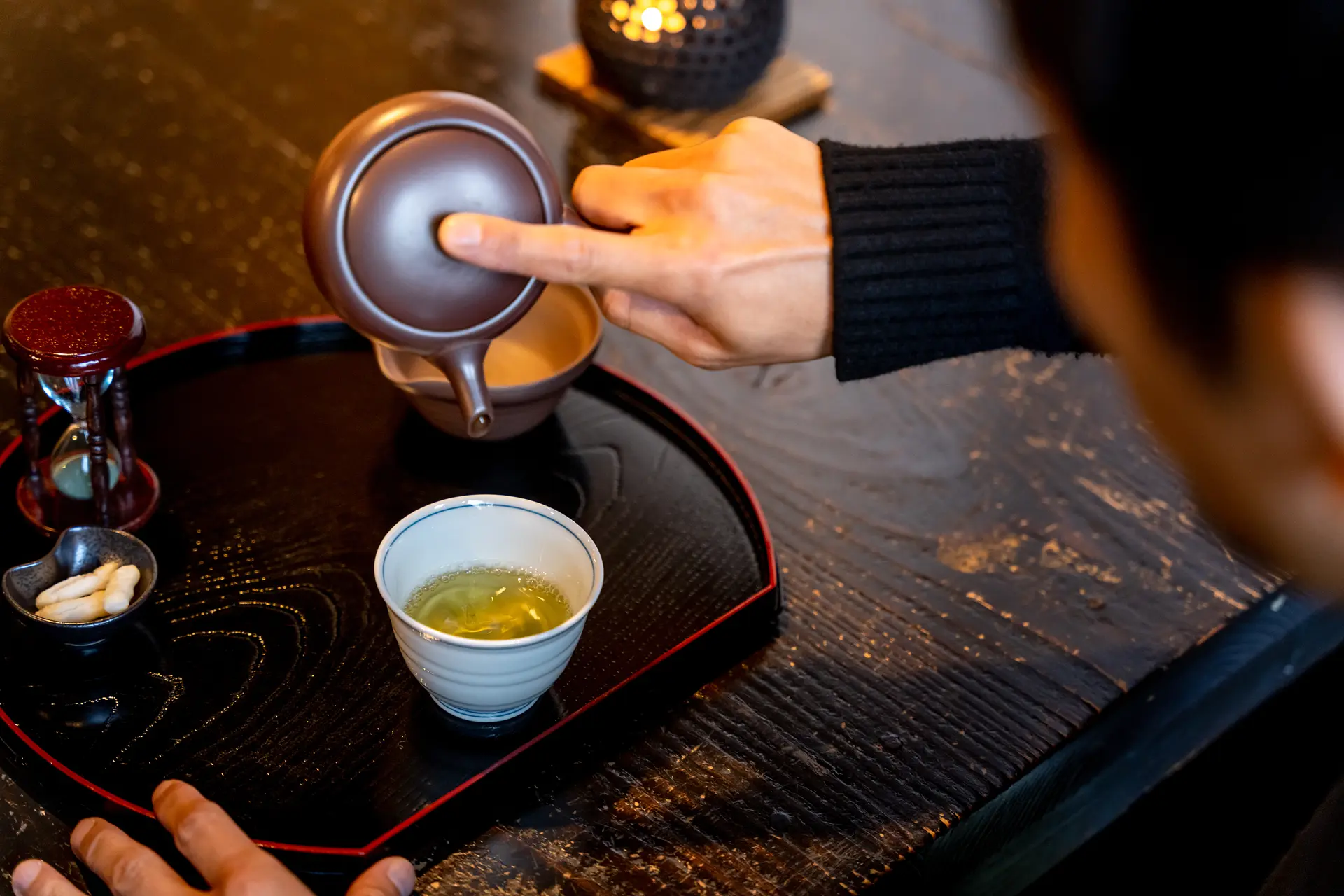
今回浅田さんは「千寿」(税込500円)を注文。深緑茶房の日本茶カフェは、スタッフの方から美味しいお茶の淹れ方を教わり、自分でお茶を淹れるスタイル。注文した茶葉に合ったお茶の淹れ方を知れるので、同じ茶葉を購入して、家で実践することもできますね。
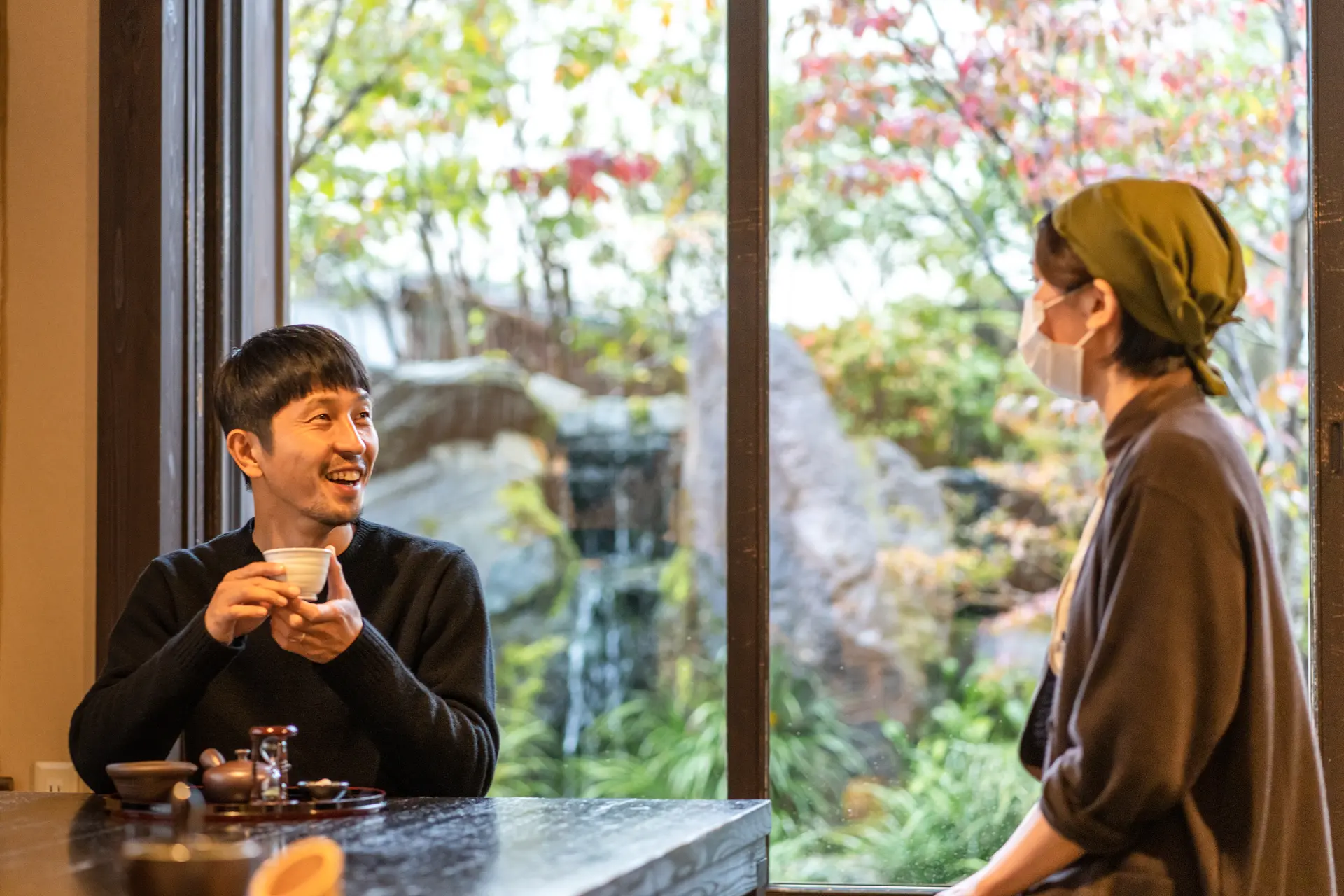
また、お茶は一度淹れて終わりではなく、二煎目、三煎目と楽しむことができます。お茶を淹れる回数ごとに変化する味を楽しむ浅田政志さん。
浅田政志さん 同じ茶葉でも、一煎目は驚くくらいうま味がある。二煎目は家庭で飲むお茶の味に近くて、なじみ深いかも。淹れる回数に応じて味の変化があって面白いですね。
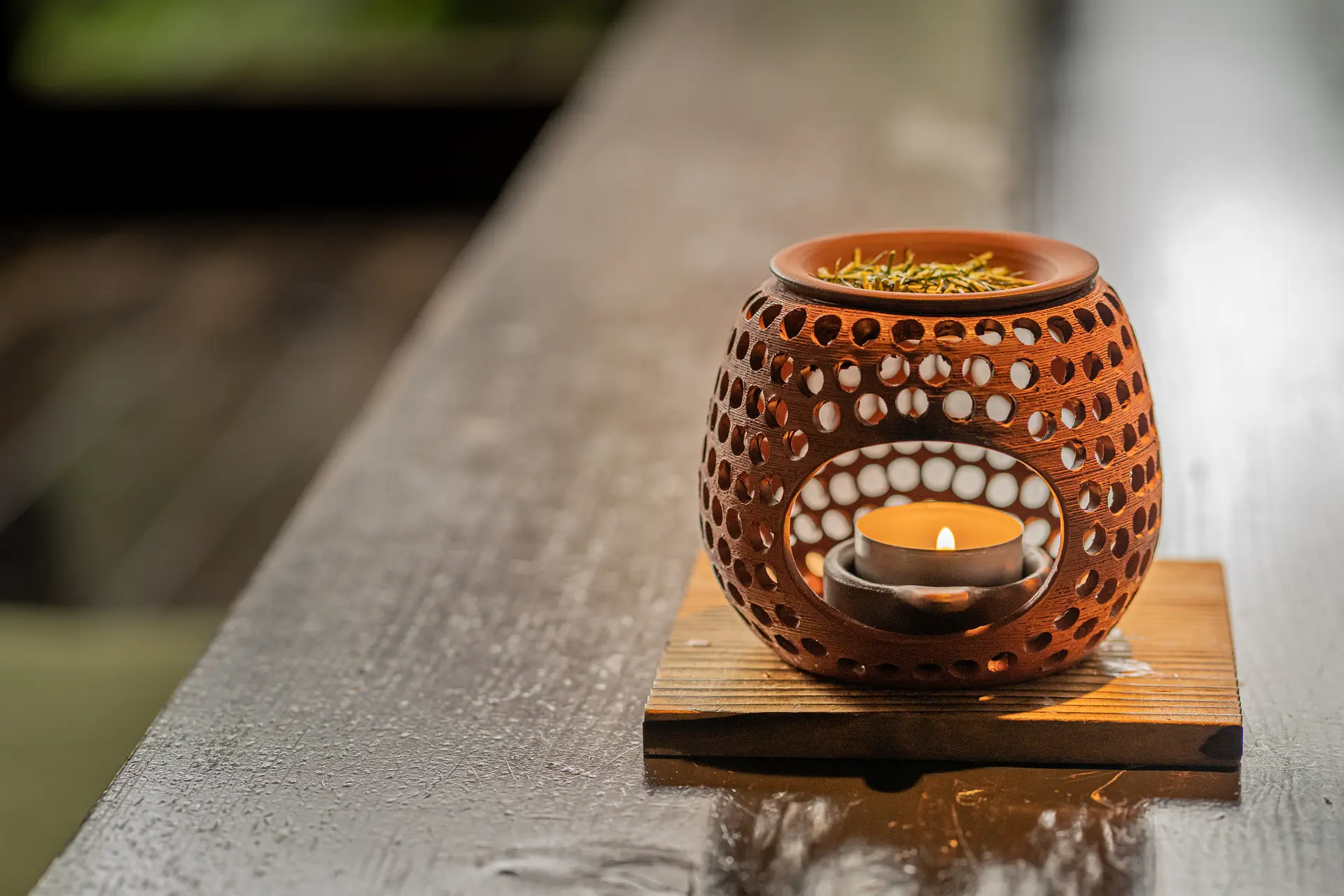
お茶を淹れて待っている間は、茶香炉の香りを楽しむのもお勧め。茶香炉とは、上に乗せた茶葉に熱を加えて、香りを楽しむ香炉のこと。「お茶の香りってリラックスできますね。自分の作業机に置きたいです。」と、香りに癒されたご様子の浅田政志さん。
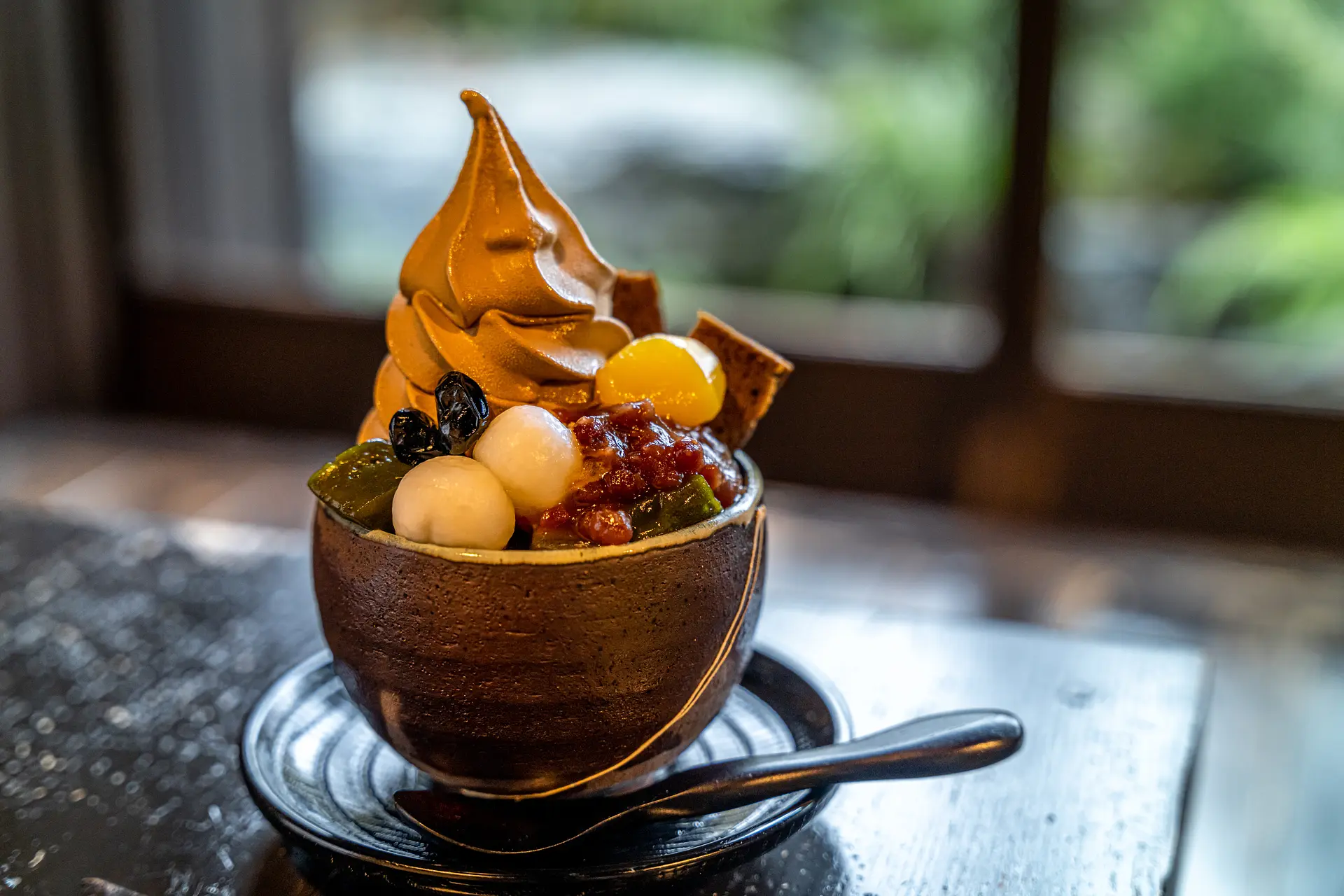
お茶に合わせて、和(なご)みパフェ(税込850円)もいただきました。パフェには「深緑茶房」製のお茶がたっぷり使われています。写真は10・11月に季節限定で販売されているほうじ茶パフェです。10・11月以外の月は緑茶のパフェを販売しているそう。ほうじ茶も緑茶も、どちらも美味しそう~!
※10・11月は緑茶パフェの販売はありません。
浅田政志さん ソフトに栗に小豆に白玉に…具材がたくさん入っていて、とっても贅沢なパフェ。いい香りだし、満足感もあります!
3.深緑茶房のお茶づくりに対する思い
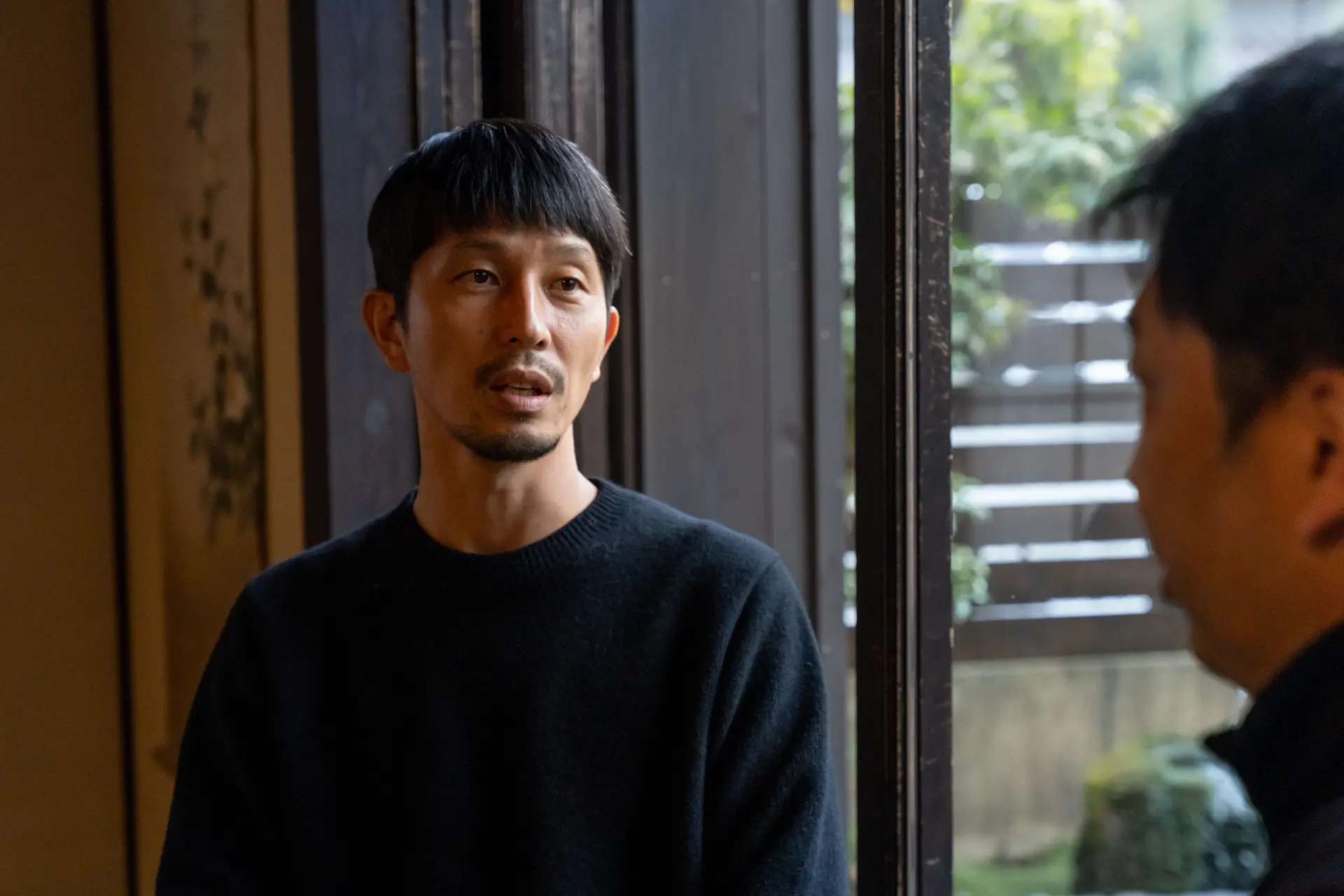
浅田政志さん メニューに「しょう太の茶」とあったのが気になったのですが…
代表・松倉さん しょう太という従業員に茶畑を1枚任せて、作られたお茶なんです。お茶づくりをしていると、どうしても「合理化」する方向に傾きがちですが、それだけではなくて「こうやって作りたいんや」とこだわりを持って、お茶づくりにかかわってほしくて。今後もお茶づくりにかかわる従業員が増えた分だけ、任せる茶畑を増やしていこうと思っています。
浅田政志さん 素敵ですね。
代表・松倉さん この地域のお茶をできるだけ今の面積で守っていきたい、と思っています。そのためには、人材の育成も必要。若い人たちがお茶づくりに興味を持ってもらえるよう、日々考えています。お茶の生産自体を守るだけでなく、松阪茶を飲んでくれる人を増やしたり、松阪茶を知らない人に向けてPRしていけたらいいなと思っています。なので、保育園や小学校から要望があれば、安全面に配慮したうえでお茶摘み体験、工場でのお茶づくり体験を実施しています。そのほかには、飯南高校から提案をもらって、松阪茶を使ったラテアート作りの際に、日本茶カフェの場所を提供したこともあります。
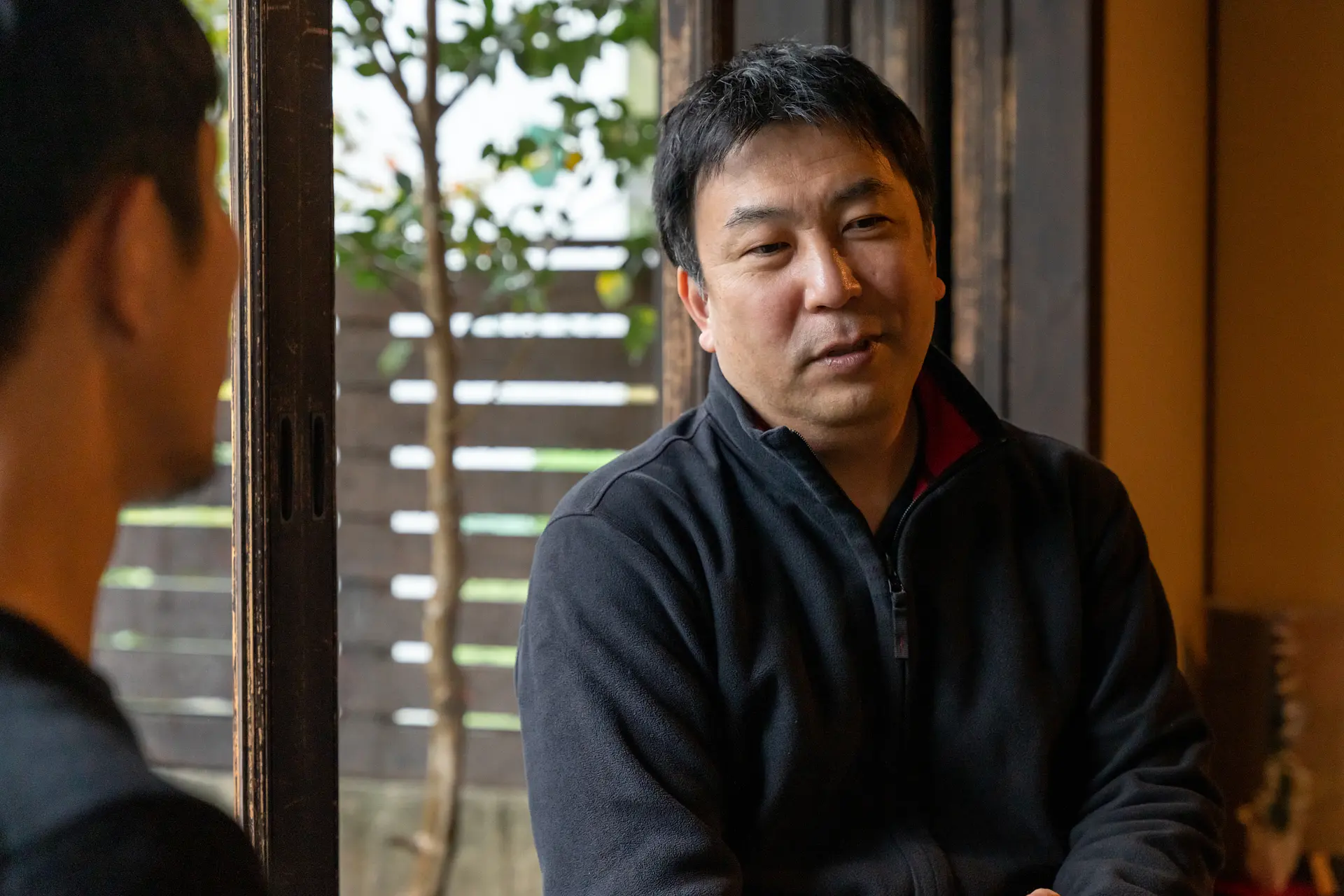
代表・松倉さん あわせて、お茶農家を守っていくためには、「緑茶を無料で出す」文化も変えていく必要があると考えています。無料で緑茶を出される飲食店さんも多いと思いますが、仕入れたものを無料で提供することになるので。実際に飲食店さんから「どうにかして有料化できないか」と相談を受けたこともあります。その際、単に有料化するのではなくて、淹れ方などで付加価値をつけられるとよいのでは、とアドバイスをしました。
浅田政志さん 強い思いを持って、お茶づくりやお茶のPRに取り組んでいらっしゃるんですね。
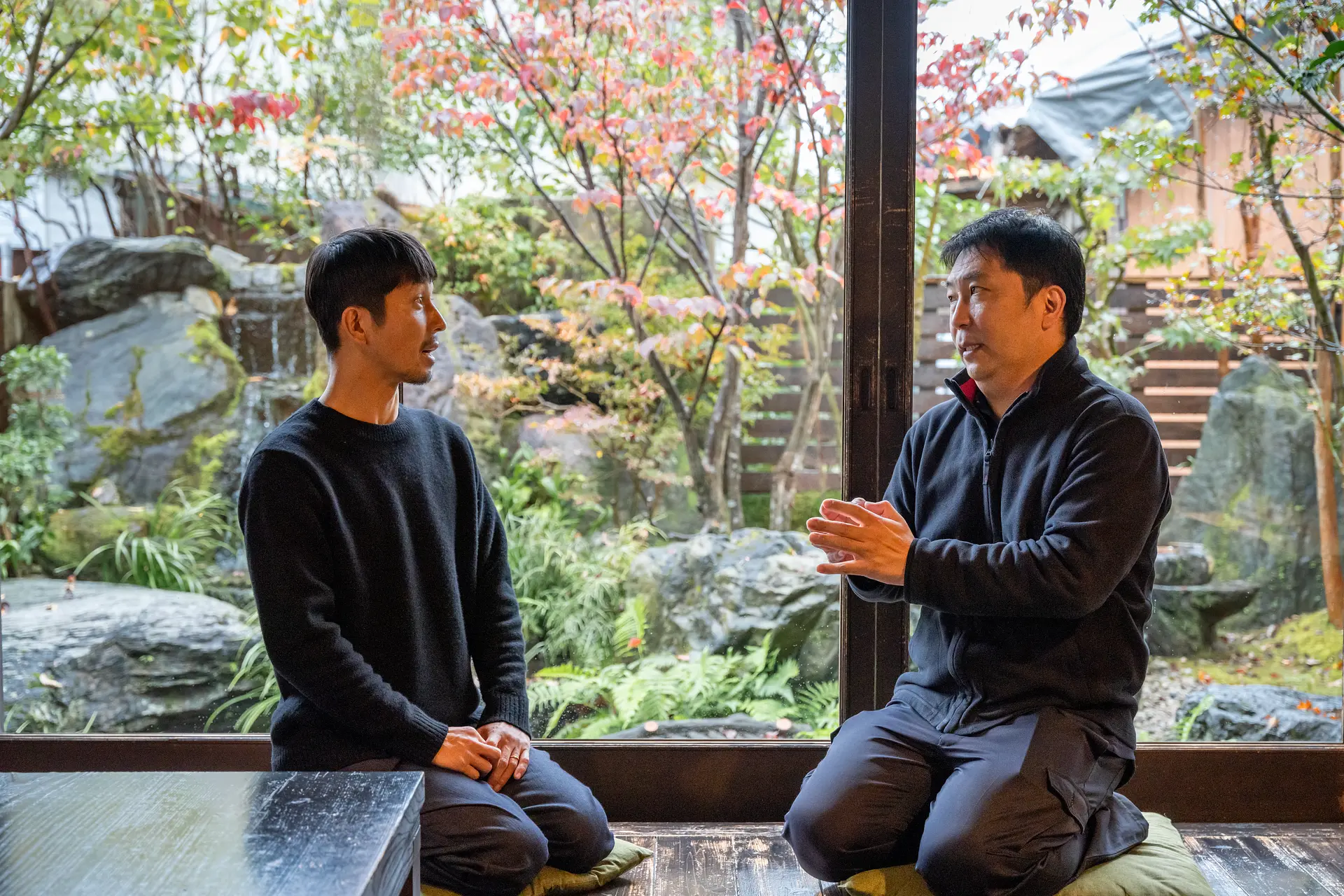
代表・松倉さん 松阪や飯南地域、松阪茶には魅力が詰まっていて、自分自身、大切にしたいなと思っています。生まれ育った飯南の田舎感が好きなんです。最近妻とウォーキングをしているのですが、空気が澄んでいて気持ちいい。飯南は田舎ではありますが、地域内に高校まであるので、子育てしやすいところも魅力ですね。それに、松阪はどこでご飯を食べても美味しいのが自慢で、もちろん松阪茶も大好き。というか、生まれたときから慣れ親しんだ味なので、「しっくりくる」というのが正しいかもしれません。地元のお茶はDNAに訴えかけるというか。そんな松阪茶を好きになって、お客さまが深緑茶房に飲みに来てくださるのはうれしいことですね。
4.浅田政志さん撮影写真
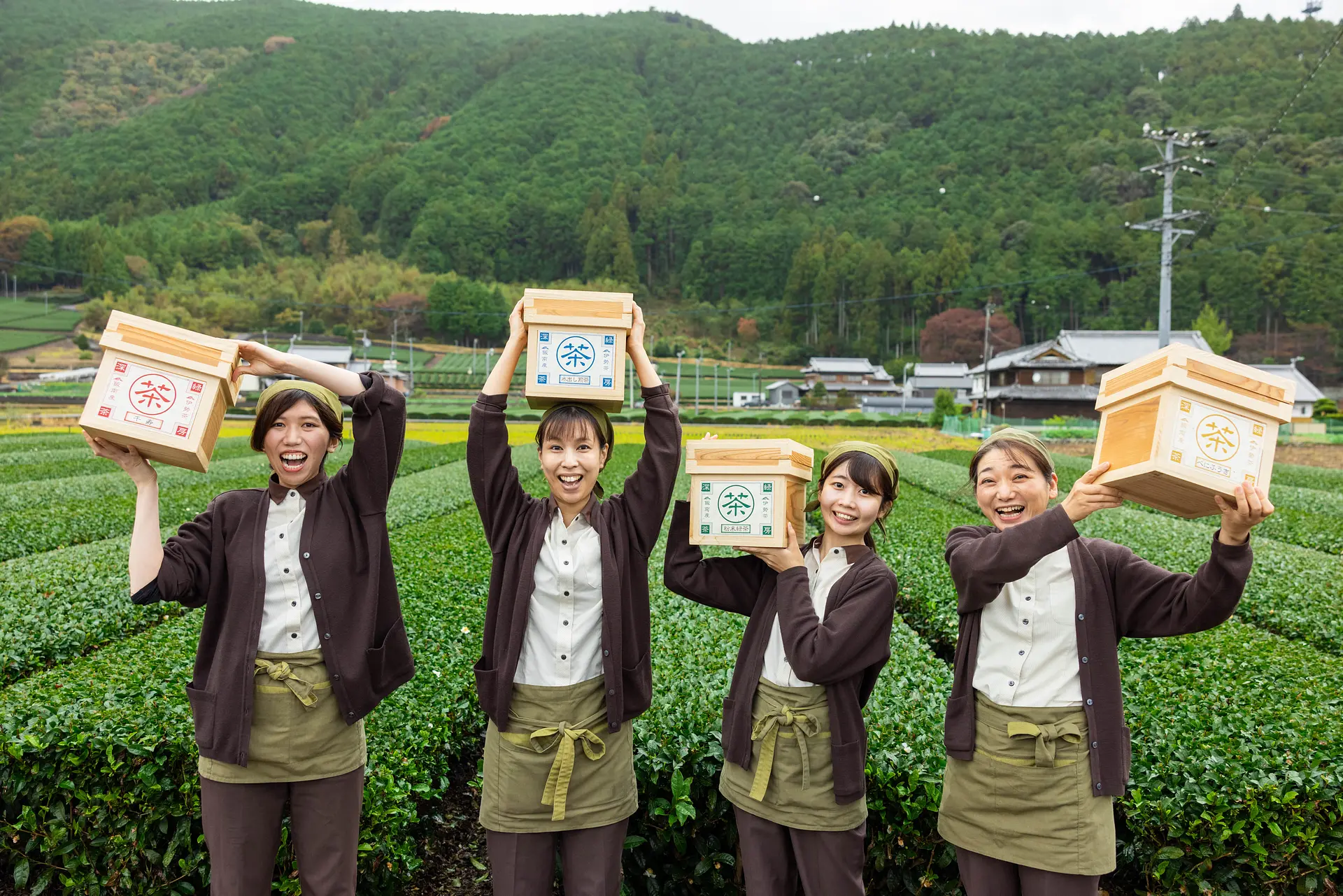
綺麗なグリーンの茶畑をバックに、深緑茶房スタッフさんたちを撮影。笑顔がさわやか!
深緑茶房
飯南本店 9:00~17:30
日本茶喫茶 10:00~16:00
毎週水曜日
年末年始 12/31~1/3
伊勢自動車道「松阪IC」より国道166号線を飯南方面へ約25分
記事制作:MSLP
| カテゴリー | |
|---|---|
| 季節 | |
| エリア |

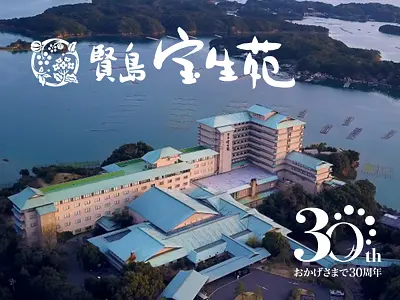
.png)